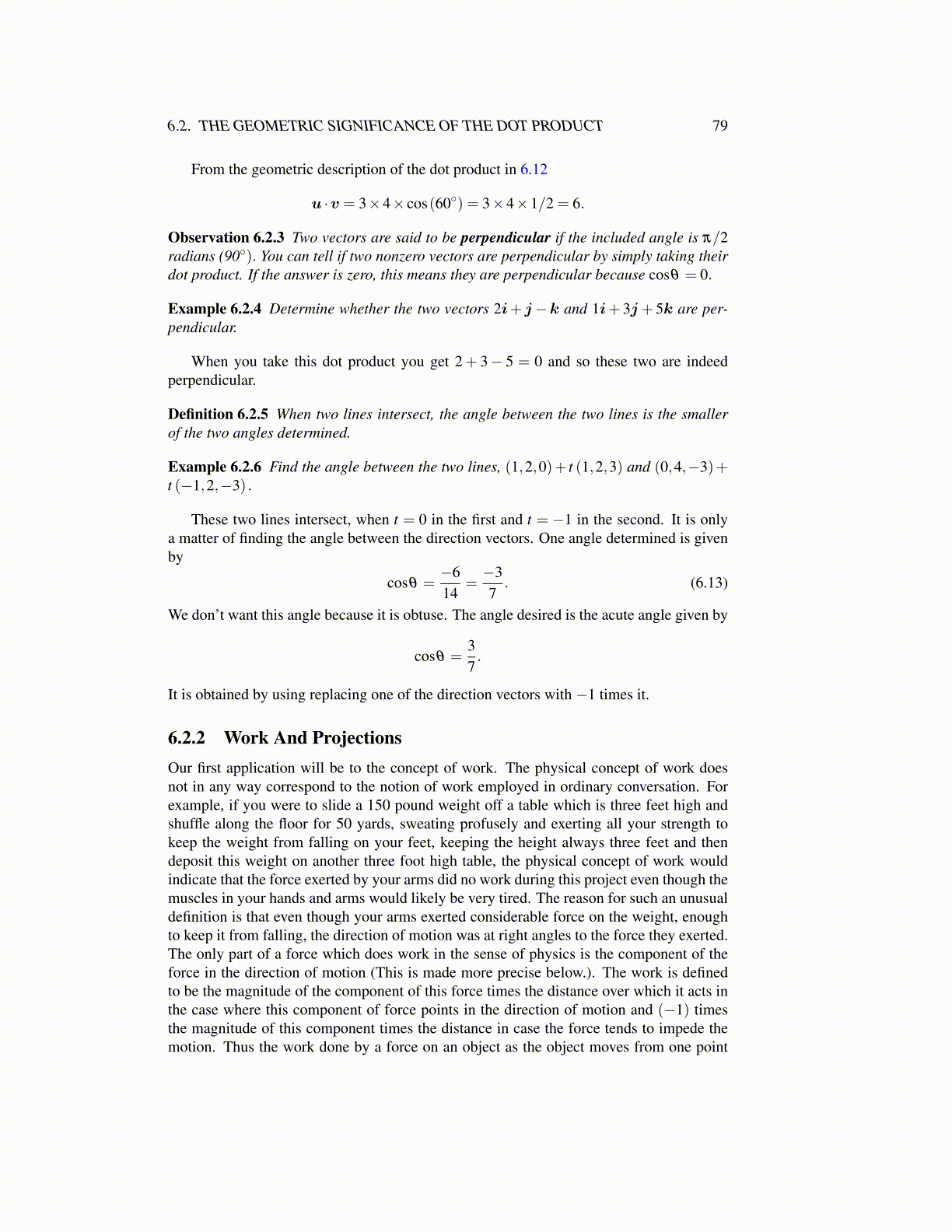
6.2. THE GEOMETRIC SIGNIFICANCE OF THE DOT PRODUCT 79
From the geometric description of the dot product in 6.12
u ·v = 3×4× cos(60◦) = 3×4×1/2 = 6.
Observation 6.2.3 Two vectors are said to be perpendicular if the included angle is π/2radians (90◦). You can tell if two nonzero vectors are perpendicular by simply taking theirdot product. If the answer is zero, this means they are perpendicular because cosθ = 0.
Example 6.2.4 Determine whether the two vectors 2i+ j−k and 1i+ 3j+ 5k are per-pendicular.
When you take this dot product you get 2+ 3− 5 = 0 and so these two are indeedperpendicular.
Definition 6.2.5 When two lines intersect, the angle between the two lines is the smallerof the two angles determined.
Example 6.2.6 Find the angle between the two lines, (1,2,0)+ t (1,2,3) and (0,4,−3)+t (−1,2,−3) .
These two lines intersect, when t = 0 in the first and t = −1 in the second. It is onlya matter of finding the angle between the direction vectors. One angle determined is givenby
cosθ =−614
=−37
. (6.13)
We don’t want this angle because it is obtuse. The angle desired is the acute angle given by
cosθ =37.
It is obtained by using replacing one of the direction vectors with −1 times it.
6.2.2 Work And ProjectionsOur first application will be to the concept of work. The physical concept of work doesnot in any way correspond to the notion of work employed in ordinary conversation. Forexample, if you were to slide a 150 pound weight off a table which is three feet high andshuffle along the floor for 50 yards, sweating profusely and exerting all your strength tokeep the weight from falling on your feet, keeping the height always three feet and thendeposit this weight on another three foot high table, the physical concept of work wouldindicate that the force exerted by your arms did no work during this project even though themuscles in your hands and arms would likely be very tired. The reason for such an unusualdefinition is that even though your arms exerted considerable force on the weight, enoughto keep it from falling, the direction of motion was at right angles to the force they exerted.The only part of a force which does work in the sense of physics is the component of theforce in the direction of motion (This is made more precise below.). The work is definedto be the magnitude of the component of this force times the distance over which it acts inthe case where this component of force points in the direction of motion and (−1) timesthe magnitude of this component times the distance in case the force tends to impede themotion. Thus the work done by a force on an object as the object moves from one point